Instruction
Want to break 70? Here’s what to practice
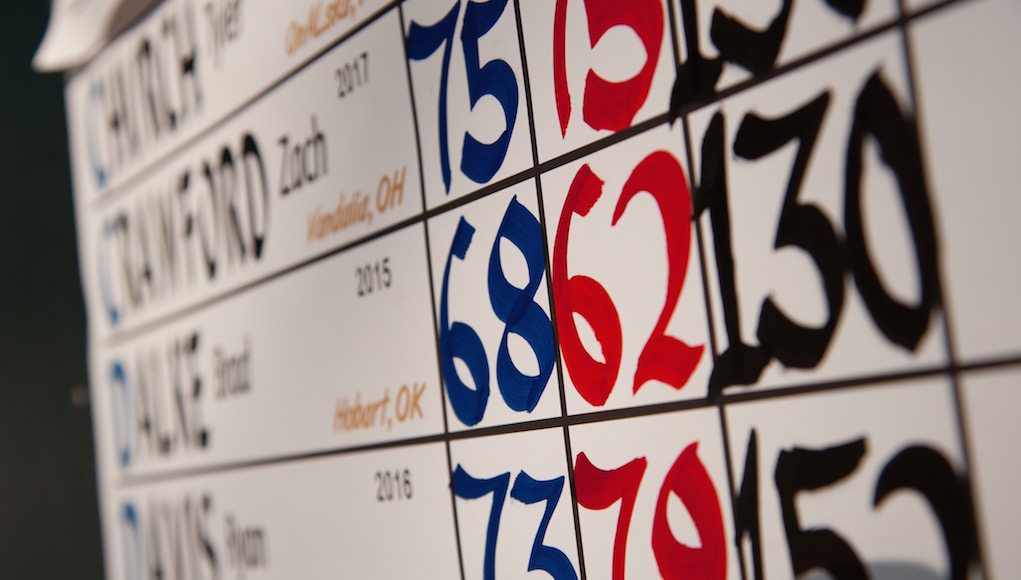
With more than 20 years experience coaching elite golfers, I often get players coming to me searching for the so-called “next level.” The truth is, there’s no secret practice drills to break 70. Shooting in the 60s is about learning; that’s the secret. But first, golfers need to know what they need to improve, and for me that comes from evidence.
Related: Want to break 80? Here’s what to practice
To understand the games of my students better, I like to use stats from web-based programs, and the one I use is www.shotstohole.com. Doing so lets me look at dispersion from the hole and then give it a value.
For example, let’s say Player A hits his 40-yard pitch shots an average of 4.5 yards from the hole. That is a break-70 number, so a strength in his game. I look at a golfer’s game like this, working out their strengths and weaknesses in different areas. I then design an appropriate practice plan, in which I like my players to try to simulate on-course anxiety by performing a series of difficult tasks, which are done in a progressive order to build tension and anxiety. When such an approach is followed, it’s more likely that a player’s practice plan will have the factors below.
Practice Needs To Be
- Planned
- Meaningful
- Purposeful
- Engaging
- Errorful
- Task Reverent
- Involve Decision Making
- Challenging
- Measured
- Reflective
Each plan needs to have some technical element if there are changes to be made. If a player’s technique is deemed good enough, however, then practice needs to be all of a performance nature.
An important note: Technical practice will be the only practice done with the same club for more than one ball. Even in technical practice, though, I still recommend changing the club every 10 balls and changing the target or environment every 10 balls as well. This should be followed even in highly technical drills, because it gives golfers the best opportunity of transferring the new movement.
It’s easy to become obsessed with golf mechanics, but there’s no question that non-technical practice is the way help to produce better scores on the course — at least in the short term. We do such “measurement” practice by creating a game that gives us a score. Each game has a scoring goal, and its set at an optimal challenge point to maintain player motivation and provide some failure.
Analysis of One of My Players
Looking at the above analysis of one of my players, we can see the green triangles. They represent where he needs to be statistically to have the best chance of breaking 70 consistently. In some areas he is better than the benchmarked data, and in some areas he is worse.
Based on the numbers, the key areas to address in his game are driving and putting. In putting alone he will save 1.6 shots per round if he can get his performance to the benchmark scores. So his practice plan will be made up of loads of putting tasks.
Prior to giving him a practice plan, however, I would do a technical overview of his game — especially his putting — to see if anything needs to be changed. I’d watch him putt and look at his start lines, how he handles breaking putts, how he reads greens and his process.
A Theoretical Break-70 Player
Above are the generic performance benchmarks of a golfer who averages 69.6. Pretending this is a real golfer, let’s pick four key areas to improve and I’ll show you how I would help this player practice better. I encourage all golfers to put their game under the same kind of microscope, and if you read the drills I suggest below there’s a good chance you can design your own that are just as good.
3-5 foot putts: The numbers say a golfer should make an average of 81 percent of his 3-5 foot putts if he wants to break 70. I’d design a putting drill where a golfer needs to make 9 out of 10 putts, and every practice putt would be putt hit on a different line. I’d also make sure he was picking putts with some slope to increase difficultly and anxiety.
20-40 yard pitches: The numbers say proximity needs to be an average of 4 yards (12 feet) from the hole on 20-40 yard pitches. So let’s aim for a 3-foot proximity and see how many attempts it takes to get five balls in that area. Every pitch shot should be hit from a slightly different yardage and angle. I also want my players to drop the balls, rather than placing them on a good lie, to simulate golf-course scenarios.
160-180 yard iron shots: The numbers say proximity needs to be an average of 12.3 yards (36.9 feet) from the hole. I’d have this player select a 5-yard wide target and see how many shots it takes to hit five balls in the gap. The target would be completion in under 10 shots. Once he met that goal, I’d want him to attempt hitting the target with straight, draw and fade shots.
Driving: The numbers say proximity needs to be an average of 62.5 yards based on 300-yard drive. Let’s go for a 20-yard fairway and, to make this a higher level of skill, try to shape every drive while taking one side of the course out of play each time. So with the fade, never finish right of the fairway. Play a points game for this. Zero points for missing right, 10 points for hitting the fairway and 5 points for finishing left of the fairway. Repeat this for the draw shot.
If you keep the scoring the same, it will tell you which is the best shot shape to hit on each hole on the course. And remember, all shots are to be hit with your full pre-shot routine and process, and all results will be recorded and measured against previous tests. This way, you can play the same tasks on the course and see how the results compare under pressure.
If you keep evidence of how often you face certain shots at certain venues, you can then practice the more statistically important areas of your game to benefit performance even more. So if you have 10 hours to practice, divide it up into the areas that have you struggling the most, or offer the most shots during your rounds.
Good luck!
- LIKE285
- LEGIT51
- WOW482
- LOL7
- IDHT10
- FLOP11
- OB10
- SHANK29
Instruction
The Wedge Guy: The easiest-to-learn golf basic

My golf learning began with this simple fact – if you don’t have a fundamentally sound hold on the golf club, it is practically impossible for your body to execute a fundamentally sound golf swing. I’m still a big believer that the golf swing is much easier to execute if you begin with the proper hold on the club.
As you might imagine, I come into contact with hundreds of golfers of all skill levels. And it is very rare to see a good player with a bad hold on the golf club. There are some exceptions, for sure, but they are very few and very far between, and they typically have beat so many balls with their poor grip that they’ve found a way to work around it.
The reality of biophysics is that the body moves only in certain ways – and the particulars of the way you hold the golf club can totally prevent a sound swing motion that allows the club to release properly through the impact zone. The wonderful thing is that anyone can learn how to put a fundamentally sound hold on the golf club, and you can practice it anywhere your hands are not otherwise engaged, like watching TV or just sitting and relaxing.
Whether you prefer an overlap, interlock or full-finger (not baseball!) grip on the club, the same fundamentals apply. Here are the major grip faults I see most often, in the order of the frequency:
Mis-aligned hands
By this I mean that the palms of the two hands are not parallel to each other. Too many golfers have a weak left hand and strong right, or vice versa. The easiest way to learn how to hold the club with your palms aligned properly is to grip a plain wooden ruler or yardstick. It forces the hands to align properly and shows you how that feels. If you grip and re-grip a yardstick several times, then grip a club, you’ll see that the learning curve is almost immediate.
The position of the grip in the upper/left hand
I also observe many golfers who have the butt of the grip too far into the heel pad of the upper hand (the left hand for right-handed players). It’s amazing how much easier it is to release the club through the ball if even 1/4-1/2″ of the butt is beyond the left heel pad. Try this yourself to see what I mean. Swing the club freely with just your left hand and notice the difference in its release from when you hold it at the end of the grip, versus gripping down even a half inch.
To help you really understand how this works, go to the range and hit shots with your five-iron gripped down a full inch to make the club the same length as your seven-iron. You will probably see an amazing shot shape difference, and likely not see as much distance loss as you would expect.
Too much lower (right) hand on the club
It seems like almost all golfers of 8-10 handicap or higher have the club too far into the palm of the lower hand, because that feels “good” if you are trying to control the path of the clubhead to the ball. But the golf swing is not an effort to hit at the ball – it is a swing of the club. The proper hold on the club has the grip underneath the pad at the base of the fingers. This will likely feel “weak” to you — like you cannot control the club like that. EXACTLY. You should not be trying to control the club with your lower/master hand.
Gripping too tightly
Nearly all golfers hold the club too tightly, which tenses up the forearms and prevents a proper release of the club through impact. In order for the club to move back and through properly, you must feel that the club is controlled by the last three fingers of the upper hand, and the middle two fingers of the lower hand. If you engage your thumbs and forefingers in “holding” the club, the result will almost always be a grip that is too tight. Try this for yourself. Hold the club in your upper hand only, and squeeze firmly with just the last three fingers, with the forefinger and thumb off the club entirely. You have good control, but your forearms are not tense. Then begin to squeeze down with your thumb and forefinger and observe the tensing of the entire forearm. This is the way we are made, so the key to preventing tenseness in the arms is to hold the club very lightly with the “pinchers” — the thumbs and forefingers.
So, those are what I believe are the four fundamentals of a good grip. Anyone can learn them in their home or office very quickly. There is no easier way to improve your ball striking consistency and add distance than giving more attention to the way you hold the golf club.
More from the Wedge Guy
- The Wedge Guy: Golf mastery begins with your wedge game
- The Wedge Guy: Why golf is 20 times harder than brain surgery
- The Wedge Guy: Musings on the golf ball rollback
- LIKE81
- LEGIT13
- WOW4
- LOL1
- IDHT0
- FLOP4
- OB1
- SHANK8
Instruction
Clement: Stop ripping off your swing with this drill!

Not the dreaded headcover under the armpit drill! As if your body is defective and can’t function by itself! Have you seen how incredible the human machine is with all the incredible feats of agility all kinds of athletes are accomplishing? You think your body is so defective (the good Lord is laughing his head off at you) that it needs a headcover tucked under the armpit so you can swing like T-Rex?
- LIKE0
- LEGIT1
- WOW2
- LOL0
- IDHT0
- FLOP0
- OB0
- SHANK2
Instruction
How a towel can fix your golf swing

This is a classic drill that has been used for decades. However, the world of marketed training aids has grown so much during that time that this simple practice has been virtually forgotten. Because why teach people how to play golf using everyday items when you can create and sell a product that reinforces the same thing? Nevertheless, I am here to give you helpful advice without running to the nearest Edwin Watts or adding something to your Amazon cart.
For the “scoring clubs,” having a solid connection between the arms and body during the swing, especially through impact, is paramount to creating long-lasting consistency. And keeping that connection throughout the swing helps rotate the shoulders more to generate more power to help you hit it farther. So, how does this drill work, and what will your game benefit from it? Well, let’s get into it.
Setup
You can use this for basic chip shots up to complete swings. I use this with every club in my bag, up to a 9 or 8-iron. It’s natural to create incrementally more separation between the arms and body as you progress up the set. So doing this with a high iron or a wood is not recommended.
While you set up to hit a ball, simply tuck the towel underneath both armpits. The length of the towel will determine how tight it will be across your chest but don’t make it so loose that it gets in the way of your vision. After both sides are tucked, make some focused swings, keeping both arms firmly connected to the body during the backswing and follow through. (Note: It’s normal to lose connection on your lead arm during your finishing pose.) When you’re ready, put a ball in the way of those swings and get to work.

Get a Better Shoulder Turn
Many of us struggle to have proper shoulder rotation in our golf swing, especially during long layoffs. Making a swing that is all arms and no shoulders is a surefire way to have less control with wedges and less distance with full swings. Notice how I can get in a similar-looking position in both 60° wedge photos. However, one is weak and uncontrollable, while the other is strong and connected. One allows me to use my larger muscles to create my swing, and one doesn’t. The follow-through is another critical point where having a good connection, as well as solid shoulder rotation, is a must. This drill is great for those who tend to have a “chicken wing” form in their lead arm, which happens when it becomes separated from the body through impact.
In full swings, getting your shoulders to rotate in your golf swing is a great way to reinforce proper weight distribution. If your swing is all arms, it’s much harder to get your weight to naturally shift to the inside part of your trail foot in the backswing. Sure, you could make the mistake of “sliding” to get weight on your back foot, but that doesn’t fix the issue. You must turn into your trial leg to generate power. Additionally, look at the difference in separation between my hands and my head in the 8-iron examples. The green picture has more separation and has my hands lower. This will help me lessen my angle of attack and make it easier to hit the inside part of the golf ball, rather than the over-the-top move that the other picture produces.


Stay Better Connected in the Backswing
When you don’t keep everything in your upper body working as one, getting to a good spot at the top of your swing is very hard to do. It would take impeccable timing along with great hand-eye coordination to hit quality shots with any sort of regularity if the arms are working separately from the body.
Notice in the red pictures of both my 60-degree wedge and 8-iron how high my hands are and the fact you can clearly see my shoulder through the gap in my arms. That has happened because the right arm, just above my elbow, has become totally disconnected from my body. That separation causes me to lift my hands as well as lose some of the extension in my left arm. This has been corrected in the green pictures by using this drill to reinforce that connection. It will also make you focus on keeping the lead arm close to your body as well. Because the moment either one loses that relationship, the towel falls.


Conclusion
I have been diligent this year in finding a few drills that target some of the issues that plague my golf game; either by simply forgetting fundamental things or by coming to terms with the faults that have bitten me my whole career. I have found that having a few drills to fall back on to reinforce certain feelings helps me find my game a little easier, and the “towel drill” is most definitely one of them.
- LIKE12
- LEGIT1
- WOW2
- LOL0
- IDHT0
- FLOP2
- OB0
- SHANK8
-

 19th Hole1 week ago
19th Hole1 week agoJohn Daly stuns fans into silence with brutal opening tee shot on PGA Tour Champions
-

 19th Hole2 days ago
19th Hole2 days agoThings got heated at the Houston Open between Tony Finau and Alejandro Tosti. Here’s why
-

 19th Hole2 weeks ago
19th Hole2 weeks ago2-time major champ announces shock retirement from the sport at age of 33
-

 19th Hole1 week ago
19th Hole1 week agoCharlie Woods finds it tough going on American Junior Golf Association debut
-

 19th Hole2 weeks ago
19th Hole2 weeks agoEdoardo Molinari reveals the latest PGA Tour golfer to turn down ‘good offer’ from LIV Golf
-

 19th Hole2 weeks ago
19th Hole2 weeks agoScottie Scheffler had an interesting response when asked how he ‘quiets the noise’ following Players victory
-

 19th Hole2 weeks ago
19th Hole2 weeks agoJon Rahm dealt fresh blow to hopes of qualifying for 2025 Ryder Cup
-

 19th Hole1 day ago
19th Hole1 day agoAddiction, spinal fusion, and scam artists – Everything Anthony Kim revealed in candid interview with David Feherty


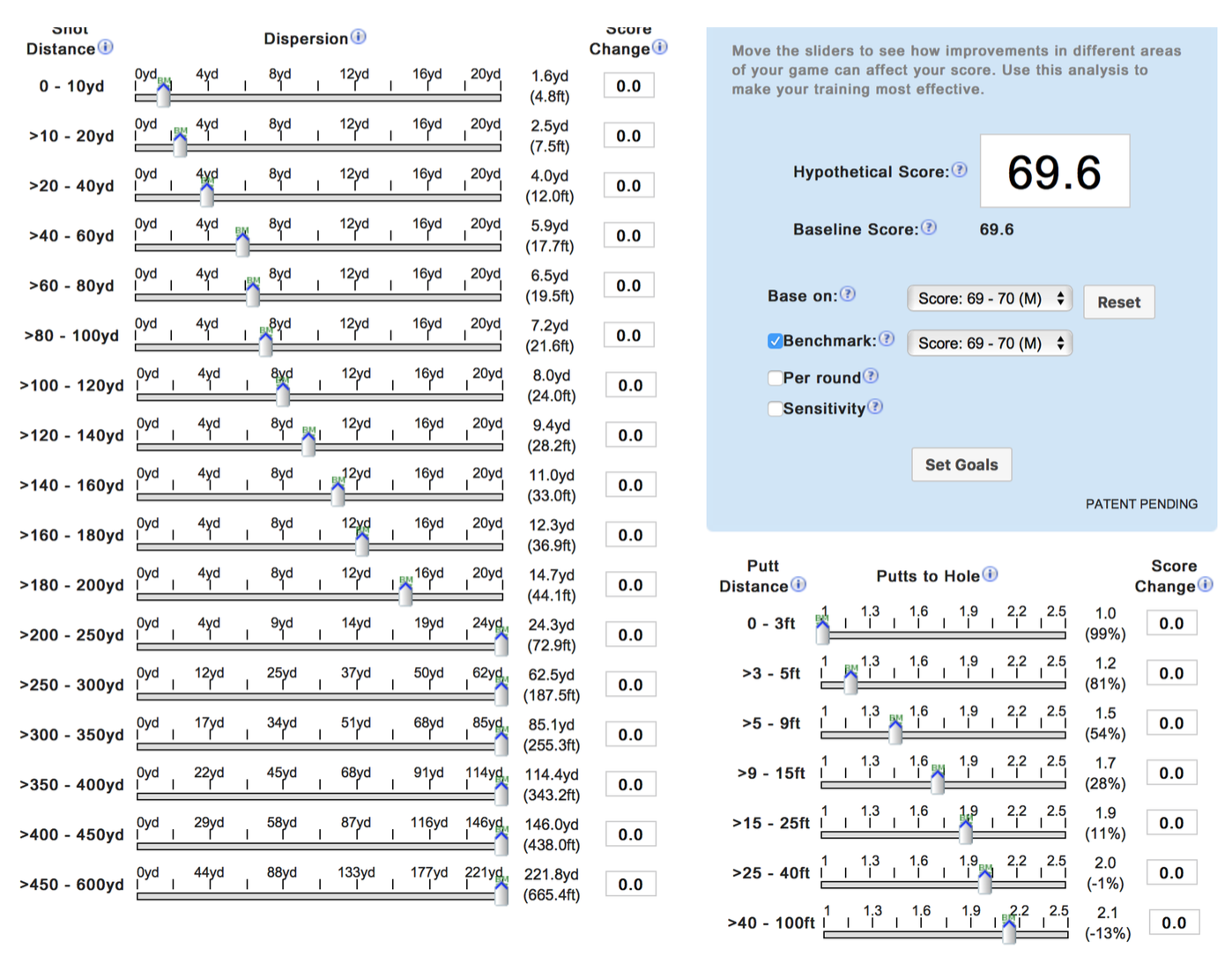
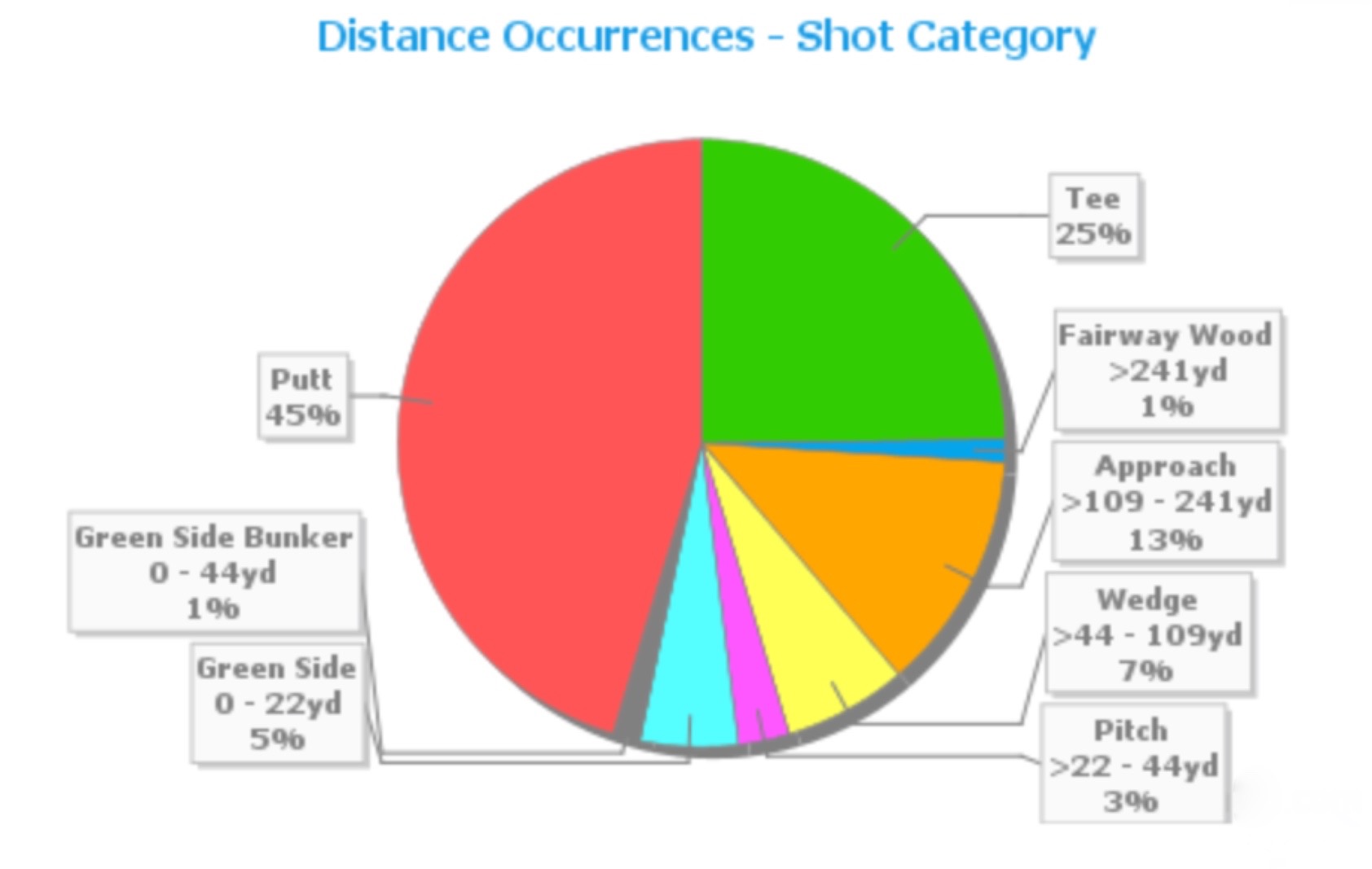















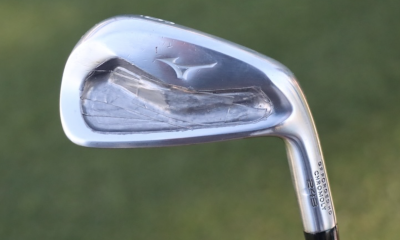

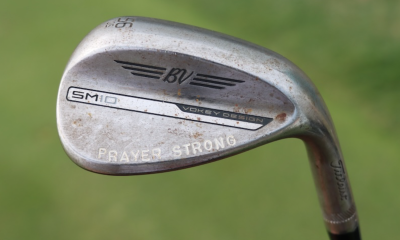

jim
Oct 18, 2016 at 1:19 pm
look, you either got it or you don’t, no hack is gonna practice his way to the 60’s… i do it by playing a crap ton of golf. if you are low 70’s, go play a crap ton of golf, divorce your wife and ignore your kids… you’ll get there. if you are in the 100’s or 90’s consider quitting and let me play though; if you’re in the 80’s, good for you, you make for a good fun 4 some, drink one for me; everyone else who already “has it” is breaking 70 with their given talents.
Ronald Montesano
Oct 17, 2016 at 3:27 pm
Do you mean “Reverse this for the draw shot” when assessing the driver?
Great article. Will use with my girls and guys varsity teams this year.
RM
Mark hawkinson
Oct 16, 2016 at 9:02 pm
I find it hard to practice 20-40 yard chip/pitch shots as there is rarely a practice area that simulates these type of shots. Your normal practice range does not encourage this type of practice because it does not sell balls.
Warwick
Oct 17, 2016 at 1:34 pm
In this country(South Africa) we have lots of sports fields and open fields that are adequate!
ooffa
Oct 16, 2016 at 6:27 am
So if your saying you want to play better, practice.
Wow, groundbreaking.
Emb
Oct 16, 2016 at 11:15 am
Clearly you didn’t read the article if that’s what you think he’s trying to say, it’s not as simple as “practice a lot”. You won’t get better if you don’t practice the right things. He said analyze the weaker parts of your game and create practice drills that simulate on course conditions and anxiety so you can practice more effectively. This might not seem “groundbreaking” to you but 99% of golfers don’t practice correctly and subsequently don’t improve
Pingback: Want to break 70? Here’s what to practice | Swing Update
RS
Oct 15, 2016 at 8:21 pm
Oh you mean practice hard day and night and don’t make silly mistakes and make putts? Man I thought I would need a degree in rocket science to figure this game out. Phew
Pawel
Oct 15, 2016 at 3:42 pm
Great article Alistair. I just want to ask if I don’t understand this or you made a mistake in a Driver section. In one sentence you mention about not to mishit it to right when hitting fade (what makes sense if you use fade to avoid something on the right and you accept mishit to the left) but then you say that mishit to the left is 0 points. Am I missing something (six!) here? 🙂